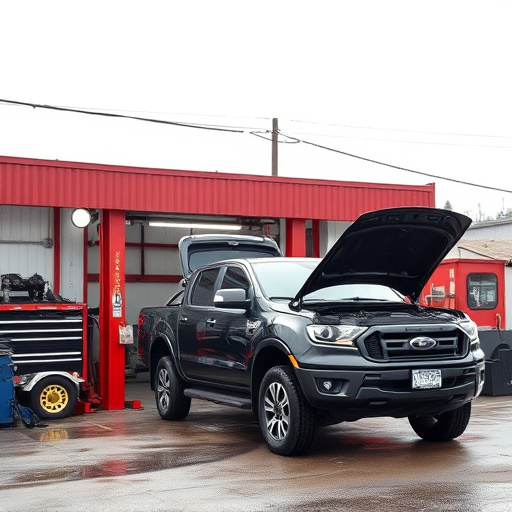Insurance estimate review is a crucial quality control step in claims processing, preventing fraud, substandard repairs, and cost overruns by scrutinizing every line item in estimates against industry standards. Essential for smooth claim resolution and building trust between policyholders and insurers, accurate estimates reduce backlogs, ensure fair compensation, and demonstrate insurers' commitment to honest service. Challenges include repair discrepancies, hidden damage, and lack of standardization, but digital platforms, standardized forms, and image recognition software can streamline the process, enhancing accuracy and efficiency in claims management for auto detailing, frame repair, and collision repair.
“Uncovering the power of insurance estimate review: its profound impact on claims processing efficiency and fairness. This article explores the intricate role of accurate estimates, revealing how they streamline resolution. We delve into the benefits, including reduced delays and enhanced accuracy.
From identifying common challenges to sharing best practices, we navigate the landscape of insurance estimate review. Discover strategies for improvement, ensuring a more transparent and just claims experience for all stakeholders.”
- The Role of Insurance Estimate Review in Claims Processing
- How Accurate Estimates Lead to Efficient and Fair Claims Resolution
- Common Challenges and Best Practices in Insurance Estimate Review
The Role of Insurance Estimate Review in Claims Processing

Insurance estimate review plays a pivotal role in the claims processing pipeline. It acts as a critical quality control measure, ensuring that the estimates for repairs or replacements accurately reflect the work required and align with industry standards. By thoroughly reviewing these estimates, insurance companies can mitigate risks associated with fraudulent claims, inadequate repairs, and cost overruns. This process involves meticulous scrutiny of every line item in the estimate, verifying materials used, labor rates charged, and ensuring compliance with safety and quality guidelines.
For instance, in the context of vehicle restoration or collision repair shop services, insurance estimate review assesses whether the proposed car paint services are commensurate with the extent of damage and adhere to industry best practices. This is particularly important for complex jobs that involve intricate body work, where even a slight deviation from the approved estimate could result in significant financial implications for all parties involved.
How Accurate Estimates Lead to Efficient and Fair Claims Resolution

Accurate insurance estimates play a pivotal role in ensuring a seamless and just claims process for all parties involved—from insured individuals to insurance providers. When an estimate is precise, it acts as a reliable roadmap, guiding the resolution of claims effectively. This precision leads to quicker processing times as the necessary repairs are accurately anticipated, reducing potential backlogs at auto body repair centers or vehicle paint repair shops.
Moreover, accurate estimates foster trust between policyholders and insurers. They provide a transparent framework, ensuring that insured individuals receive fair compensation for their damaged vehicles in an auto collision center. This transparency is vital in maintaining strong customer relationships and the reputation of insurance providers, who can demonstrate their commitment to serving clients honestly and efficiently through meticulous insurance estimate reviews.
Common Challenges and Best Practices in Insurance Estimate Review

The process of insurance estimate review is a critical yet complex phase in claims management. Common challenges include discrepancies in repair estimates, undeclared or hidden damage, and lack of standardization across repair facilities. These issues can lead to prolonged settlement times and increased costs for both insurers and policyholders.
Best practices in insurance estimate review address these challenges through digital platforms that facilitate seamless communication between insurers, repair shops, and policyholders. Implementing detailed, standardized forms for auto detailing, auto frame repair, and auto collision repair ensures consistency and reduces the chances of manipulation or oversight. Moreover, utilizing advanced technology like image recognition software can automate damage detection, enhancing accuracy and expediting the review process.
Insurance estimate review plays a pivotal role in ensuring claims processing is efficient, fair, and accurate. By meticulously assessing estimates, insurers can streamline settlement processes, reduce disputes, and enhance customer satisfaction. However, navigating common challenges like data inconsistencies and subjective valuations requires adopting best practices such as standardized evaluation criteria and continuous training for reviewers. Embracing these strategies allows for a more robust insurance estimate review process, ultimately benefiting both insurers and policyholders.













